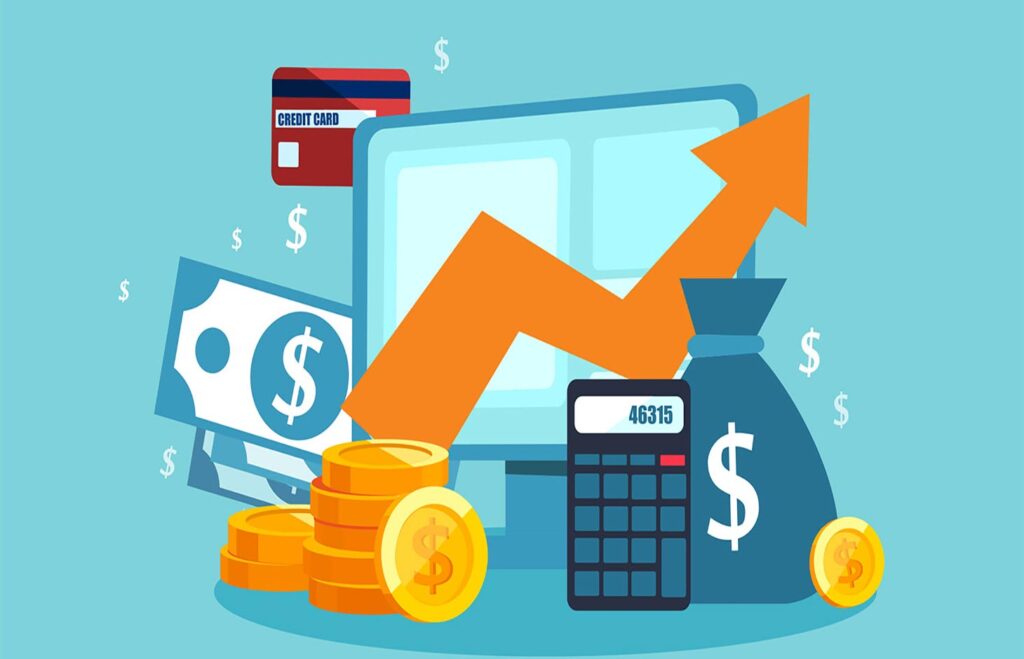In the push to acquire customers and amplify MRR, it may be easy to forget that the number of active accounts is just one factor that affects a subscription SaaS business’s bottom line.
Just as important is how you price your software.
While acquisition is critical in the earliest stages of a SaaS business, a software’s value tends to increase as it develops and evolves. Its pricing should reflect that.
Unfortunately, many SaaS providers fail to revisit pricing in any meaningful way until they’re feeling stretched thin. And by then, they’ve already forfeited revenue that would have been earned with pricing that truly reflects their subscription software’s value.
Data shows that retention and monetization “are much more effective at driving growth than acquisition,” according to Price Intelligently. SaaS providers need to frequently revisit their monetization strategy to ensure long-term business health.
Whether your subscription software service is based on flat fee, usage, overage, or tiered pricing, check out some practical tactics to ensure you’re getting your pricing strategy right.
1. Spend time on your SaaS pricing strategy.
It’s that simple.
On average, SaaS businesses only spend 8 hours in total planning their pricing. That’s just one work day! Given how critical pricing is to revenue and business health, you’d think there’d be a bit more thought and strategy put into it.
Many SaaS businesses start off with a ballpark guess at the best pricing model, then fail to ever revisit the topic. This is a mistake.
Plan to spend time on pricing and perform due diligence to make sure you get it right. You’re here, which is a great start.
2. Iterate often on the pricing of your subscription software service.
Rather than treating pricing as a set-it-and-forget-it task, subscription SaaS businesses that plan to grow revenue over time—which should be ALL of them—have to plan to revisit and iterate on pricing often to increase recurring revenue.
Don’t wait until a price change is absolutely necessary, leaving money on the table until you can’t afford to anymore.
A proactive approach that involves experimenting with pricing every year, or even quarter, can generate revenue to fuel growth. Know that there are businesses that iterate on pricing every few weeks.
3. Test in increments paired with value.
If you do change pricing across the board, tread lightly. Try out price increases in smaller amounts to test your customers’ response, and pair the increases with added value to pad the blow.
In June 2020, YouTube TV sharply increased its monthly subscription price to $64.99/mo. That’s three years of price hikes in a row for the service, going from $35/mo. to $40/mo. in 2018, and then to $50/mo. in 2019.
However, each price increase has come with a slew of new TV channels and programs. Thanks to this added value, subscribers haven’t abandoned the service—a good sign for YouTube.
4. Reassess your costs.
It’s very common for SaaS providers to underprice their subscription software. This is an understandable mistake—price is an easy way to stay competitive!
However, underpricing leaves a business vulnerable and creates barriers to scale.
What does it actually cost to provide your service? What are your product development costs? Employee salaries? Etc.
Revisit the actual cost of providing your software service. And do it often.
5. Know (and raise) your perceived value.
In addition to costs, you need to understand your SaaS’s value from a customer perspective. Subscribers sign up because of their perceived value of your software service. So, what’s your service worth to your customers? How much money, time, or effort does it save?
Regularly revisiting the value of what you provide helps ensure your pricing is aligned with your product’s value as seen through the eyes of your customers.
6. Watch the market.
Sometimes, good price changes are a matter of timing. Raising prices during times of widespread financial hardship, for example, likely won’t work out well for most SaaS businesses.
On the other hand, a price increase paired with a speedy new implementation service feature might be well-received if customers are looking to pivot quickly in an uncertain market.
7. Keep your eye on the competition.
Similar to watching the market, you’ll want to watch competing SaaS providers closely when you’re deciding how to determine subscription price.
If a competitor increases their value with new offerings without raising their prices and you can’t match that value, you may need to lower your prices or add similar value to remain competitive.

8. Figure out the unit economics.
“Software, cloud-based, and subscription-based businesses have a particularly hard time estimating unit economics,” financial advisory firm Finerva asserts. This is due to volatile lifetime values and a lack of systematic methods for valuing development costs.
However, with a little work, you can figure out your customer lifetime value (CLV) and customer acquisition cost (CAC).
Once you have those numbers, aim for an CLV-to-CAC ratio of greater than 1:1. This usually indicates your customers generate more revenue than the cost of obtaining them. The higher the ratio, the better chance of being profitable.
9. Understand customer expectations.
One of the biggest mistakes any business can make is failing to understand customer expectations. After all, how can you meet expectations and retain customers if you don’t know why they’re buying and sticking with your subscription software service?
Use subscriber data and feedback tools to paint a clear picture of your customers, their spending habits, how they use your SaaS, and what they expect from you. Use this data to inform your pricing.
10. Analyze data over time.
While we’re on the topic of data, remember it can be leveraged in many ways. Understanding customer expectations is one, and deciphering patterns related to pricing iterations is another.
Tracking subscriber data over the course of many iterations can help you understand the consequences of your pricing decisions. Raising prices across the board may come at the cost of churn, for example, whereas adding a new tier could have the opposite effect.
Leverage subscription management software to watch for changes in acquisition and retention around pricing changes, and use what you learn in future iterations.
11. Set goals.
Perhaps one of the best ways to ensure your pricing approach is moving in the right direction is to set goals.
By now, you know the costs associated with providing your subscription software service and the perceived value your customers assign to it. To keep your SaaS business financially healthy and growing, set profit margin goals that ensure incoming revenue can be put toward improving and expanding your business.
Pricing to meet broader goals ensures business longevity.
Simplify subscription software service pricing decisions
With the right pricing strategy, frequent iterations, and detailed financial insights and oversight, SaaS businesses can ensure they’re properly valuing their subscription software services for optimized MRR growth.
And with the help of an adaptive subscription billing platform, all the data needed to make smart pricing decisions is at your fingertips.
Modern billing solutions also make it easy to apply and automate even the most complex usage and hybrid pricing models, and they’re flexible enough to allow for near real-time iterations for quick go-to-market, and even custom pricing configurations on a customer level when needed.
With this agility and financial reporting capabilities combined, it’s the perfect tool for homing in on the right pricing strategy for your subscription software service.








